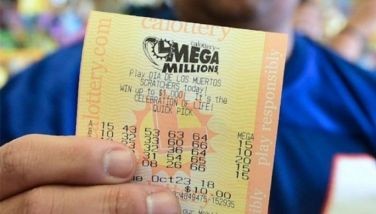How misogyny affects women in Philippine media
MANILA, Philippines — "The only thing that separates women of color from anyone else is opportunity,” Viola Davis said in her iconic 2015 Emmy speech. “You cannot win an Emmy for roles that are simply not there."
Six years later, her speech still rings true. Even in fields outside film, there are fewer opportunities for women than there are for men.
Eight of the top news agencies in the world have fewer lead photo bylines by women, non-profit Women Photograph said in its 2021 report on the industry. Only 31.6% of lead photo bylines in The New York Times are of women. At The Guardian, it is 11.5%
Media in the Philippines is no different, and women and LGBTQIA+ community have been fighting for opportunities they have been denied because they are not cisgender, heterosexual men.
Misogyny is a kind of sexism that manifests in forms of hatred, physical, emotional abuse and sexual harassment towards women.
Women photographers, like many women in other fields, have to deal with gender biases, stereotypes, sexual harassment and mistrust simply because they are women and even those who have been in the industry for many years are not immune.
Misogyny and men’s standards
Sandra Dans, an art educator and a professional photographer, explained that the ‘photography greats' originated in the West in the 1930s. Back then, straight, white men had all the access to darkrooms and equipment and were able to set the standards and aesthetics of photography.
In contrast, women weren’t even allowed to do paid work in those times.
She emphasized that those early standards became the benchmark of photography in the Philippines because of the influence that America has had on our education.
Dans is the founder of Off Kilter, a non-traditional wedding photography studio that uses the taglines “Smashing the patriarchy with your crush” and “Weddings for weirdos”.
This has meant fewer opportunities for her, especially in an industry that thrives on patriarchal tropes.
She clarified that the primacy of these tropes and narratives isn’t necessarily intentional — nakasanayan lang” (it’s just something we’re used to).
They are part of a culture so ingrained in our consciousness, but even small acts of dismantling the patriarchy help.
Dans said she also combats these norms in the academe by performing acts of rebellion, by “simply existing”, and by reminding her students that they do not have to chase standards set in the 1930s.
Sometimes all they need to do is carve out space for their own work.
Fewer opportunities, unhealthy environment
“Bakit hindi pwedeng sabay kami ‘di ba? (Why can’t we be seen as equals?)”
Nana Buxani, a documentary photographer born and raised in Mindanao, is no stranger to always having to prove her worth because editors tend to send men to cover conflict areas.
“Kailangan i-prove pa. Kesa sa mga lalaki, ‘O sa iyo ito’, ibibigay na sa iyo on a silver platter. Sa babae you have to say kaya mo rin ito,” she says.
(You have to prove yourself. For men, they’re just assigned coverage, they get it on a silver platter. If you’re a woman, you have to say you can do it too)
“We have to learn to fight for it,” she says.
Dans clarified people will not say outright that "we will not hire you because you have a vagina." Misogyny can be felt through what multimedia journalist Hannah Reyes Morales called "small nudges," she said.
"[I]t's more on the degrading sex jokes, the inappropriate questions, the conflicting feeling between being thankful for the care men show [while also keeping] you away from the 'hard stuff' you want to shoot so you don't ruin your makeup."
Dans said experiencing these make it difficult for women to thrive in the industry and can drive women away from opportunities.
Unequal pay, different lenses
Rosem Morton, a nurse, National Geographic and New York Times photojournalist based in Maryland in the US, has started working towards gender parity by asking male peers if they are paid the same.
"I’ve started asking my male counterparts how much they are getting paid for an equal assignment, and just make sure that I’m getting paid the same way," she said.
"It’s really really hard to advocate for myself. I kind of think that this is not only for me, this is also going to be for my community. Because every time they hire a person that looks like me, they’re gonna know that this is the price that we should have."
She said the community should encourage outlets, newsrooms and production houses to hire more women and LGBTQIA+ photographers to make sure stories are told by people who understand nuances beyond the dominant narratives.
Morton’s project on the Filipina nursing diaspora in the US, for example, was not seen as a nationally newsworthy story. She pushed through with it because of the issue’s importance to the Philippines and because of the country’s contribution to the history of nursing in the US.
Recently, fashion photographer Colin Dancel created a Filipina Women and Non-Binary Photographers Database inspired by Philippine Fashion Coalition’s Esme Palaganas trying to professionalize creatives by registering with the Bureau of Internal Revenue.
Directories that have everyone’s information create a level-playing field. ‘Here are all the photographers, you have no excuse not to hire everybody equally, because our information is here and everything is updated.’,” Morton said.
She says this will also help show that there are enough numbers for government to take a proposed Creatives Bill seriously.
Dancel is also conducting a survey of Filipino photographers that will help towards putting policies in place to report photography-related businesses and the craft itself.
Diversity discussed but not seen
Diversity, or the variety of ethnicities and genders in the workplace, is a vital attribute in storytelling as it helps paint a larger picture coming from different perspectives and helps with understanding important cultural nuances and contexts during coverage.
“I have mixed feelings about it [tokenism]. Is this a pat on your back, to say that we’re equal now? You gave one spot out of ten to a person of colour? It’s not gonna be enough, I think it’s going to be enough if we stop talking about diversity because we actually see diversity,” Morton said.
Dans said tokenism can be problematic and harmful, likening it to how some movies have an all-white cast with one friend who isn't. She said that sil allows "brands to think doing the bare minimum covers their bases [instead of working at] being truly equal."
However, she also emphasized that "it has to start somewhere," and said that awareness of the need for diversity can lead to actual diversity.
In a previous interview on Pride Month with Philstar.com, BBDO Guerrero’s Niño Jose Gonzales, who teaches marketing and advertising at De La Salle University in Manila, said tokenism is still one step forward to awareness. Gonzales said, though, that the community must constantly remind brands to go beyond just performative allyship as a ploy to market themselves during a specific month.
Parity between men and women in terms of salaries must be achieved, documentary photographer Geela Garcia stressed, adding that if brands really want to help, they move to erase the gender pay gap by compensating women more.
"If not equally, they must pay women better instead," she said.
Referencing a recent controversy involving a camera brand and its brand ambassadors, Garcia said brands should no longer be put on pedestals and that the community should stop seeking validation and visibility from them.
She said people should instead look at how their photographic work contributes to society.
Self-reflection and allyship
The road to equality cannot be achieved by women and LGBTQI+ community alone, it needs sincere allyship and deeper understanding to overhaul the industry.
"I think men can be more helpful in this conversation by really doing a lot of self-reflection," Morton said as she talked about experiences of inappropriate treatment in the field. "I think certain words or certain small actions carry a lot of weight."
"Include men in more gender-sensitive dialogues," Buxani said. While women and the LGBTQI+ community do not bear the responsibility of educating men about misogyny all the time, it can be helpful to encourage them in workshops and conversations.
Morton reiterated that a part of unlearning misogyny is knowing that "it’s not an attack on [the man] as a person, it’s an attack on what we were brought to believe in growing up."
She said the community should also "[do] the work by educating ourselves and reprimanding inappropriate actions in our own circles about the injustices."
Buxani is confident that the small strides for gender equality will eventually lead to a more equitable industry and society.
"Pagdating ng panahon, maging pantay na ‘yan… lahat naman ng mga bagay na hindi equitable, kapag may pushback dadating ‘yon doon. Ang ano na lang doon is time…”
(The time will come that we will be seen as equals. Everything that isn’t equitable will get there if there is pushback. It is only a matter of time.”) — With Luisa Morales
- Latest































